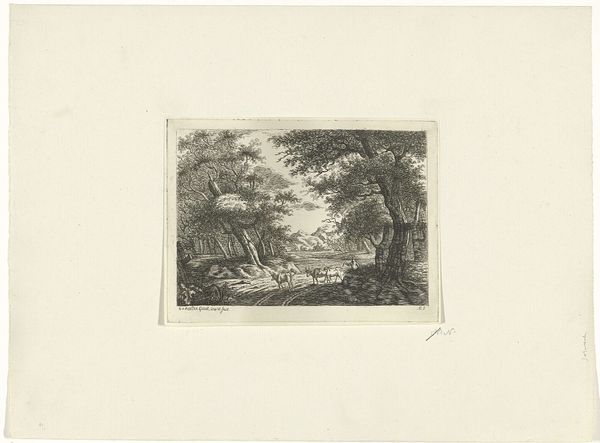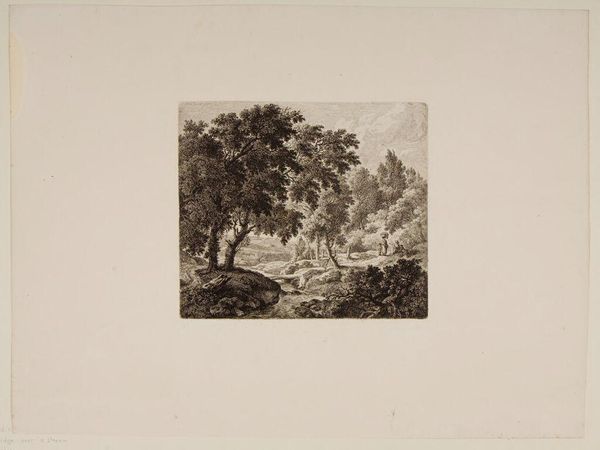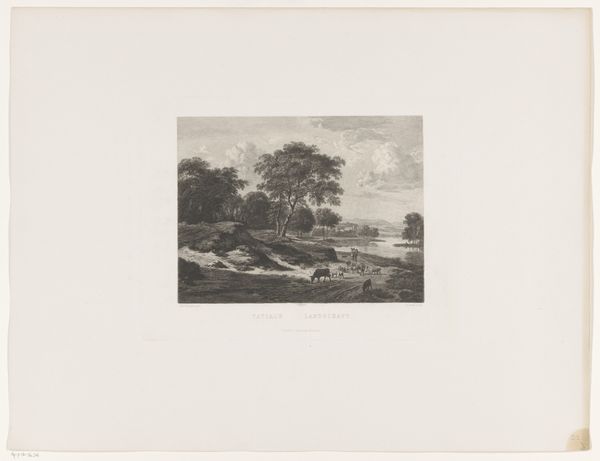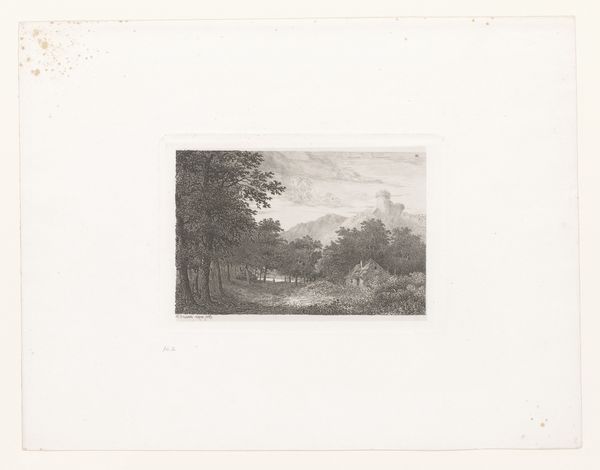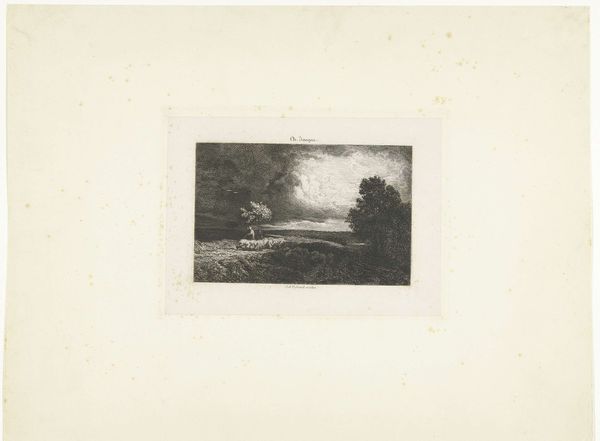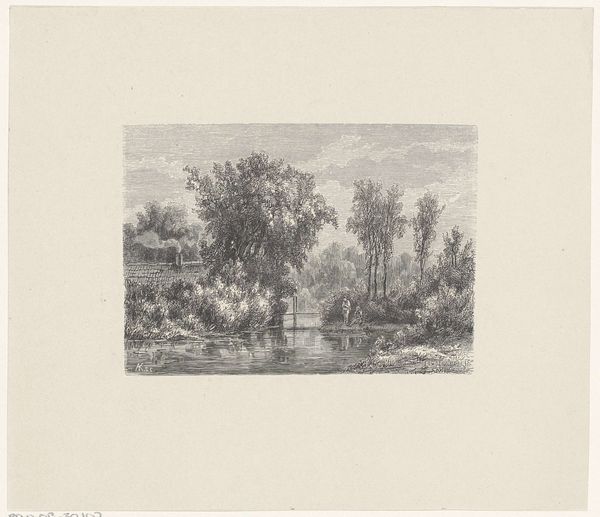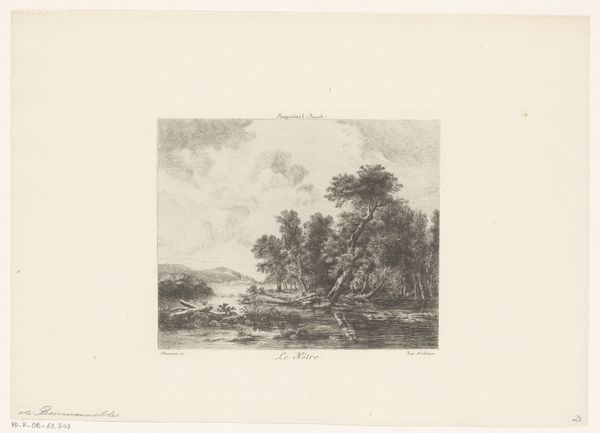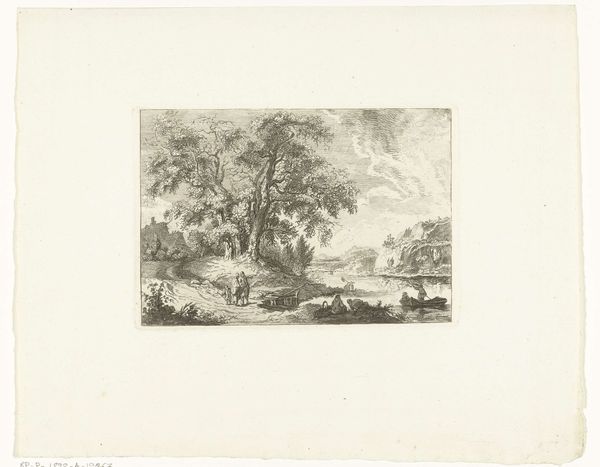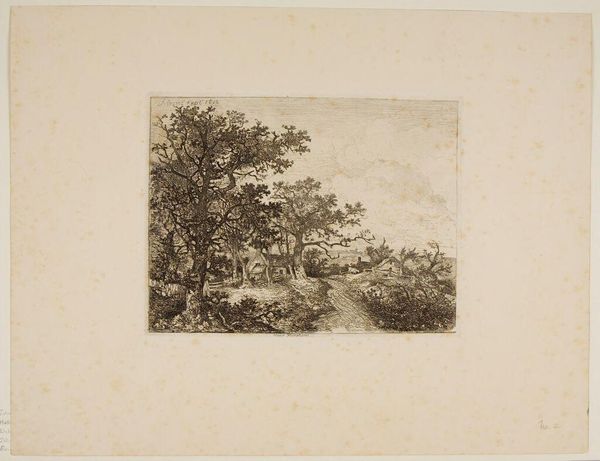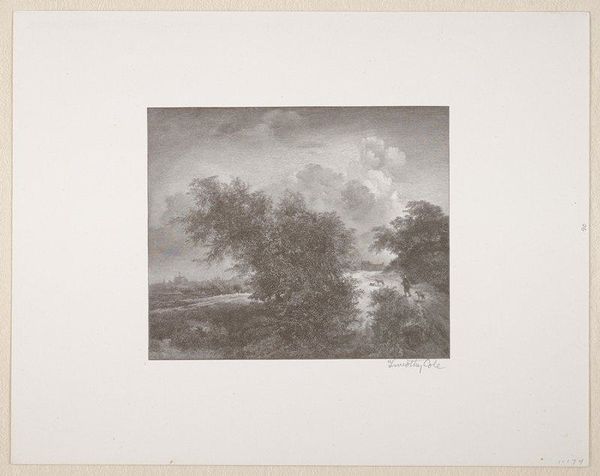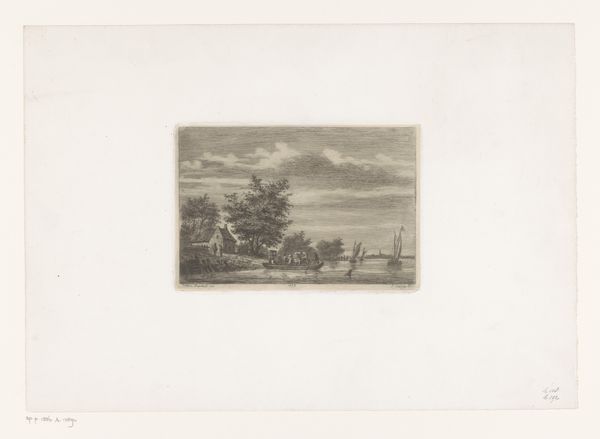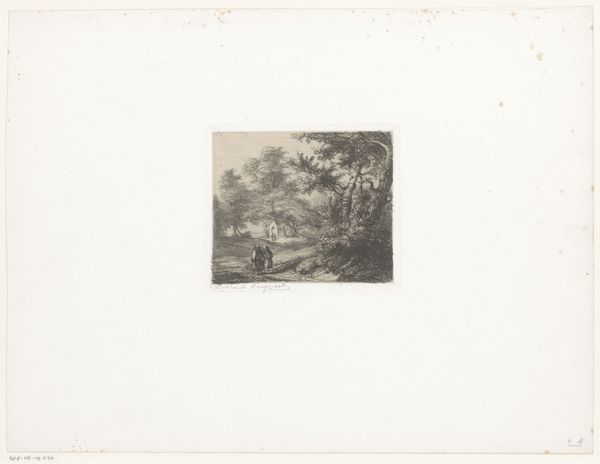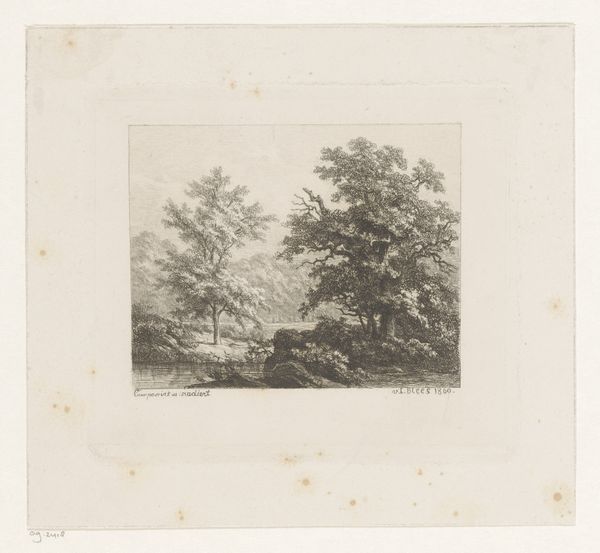
print, etching, engraving
#
medieval
# print
#
etching
#
landscape
#
engraving
#
realism
Dimensions: height 130 mm, width 177 mm
Copyright: Rijks Museum: Open Domain
Curator: So pastoral! Looking at "Kudde schapen bij de bosrand," created around 1860-1900 by Johannes Arnoldus Boland, what comes to mind? The medium is printmaking—etching and engraving. Editor: I'm struck by its quiet stillness. There’s something almost melancholy in this depiction of sheep near the woods, and it does feel rather antiquated, especially since the themes that deal with industrial progress were taking a new importance in this era. I feel like the artist is saying something about tradition. Curator: Yes, stillness is key, and those emotional connotations really resonate. The symbol of sheep often evokes themes of innocence, vulnerability, even the idea of a collective consciousness guided by an unseen hand. Boland may be channeling this, linking the imagery to much older medieval traditions or anxieties about maintaining tradition through a realism. Editor: Absolutely, it is as if Boland aims for the sublime experience found through encounters with nature, even through domesticated images of sheep in a natural surrounding, instead of participating with artistic or intellectual movements tied to progress that were current in this period of the Industrial Revolution. There's a clear visual and thematic emphasis here; the artist focuses the composition and perspective on themes of agrarian life, in an artistic attempt to preserve its social power at a time when progress tends to overshadow it. Curator: Note how the landscape almost becomes a character itself. It's not merely a backdrop; the trees, the sky, the suggestion of a vast distance – these are elements integral to understanding the sheep's place within a wider cosmic order. The artistic approach invites a conversation across centuries through this visual dialogue. Editor: I agree; the scale certainly emphasizes this reading of the artist intentionally employing older symbolic techniques. Thinking about it in these terms opens up a crucial inquiry: what does choosing rural scenery represent, at the close of the 19th Century, when everything— including visual techniques and political emphasis of artistic practices—began evolving rapidly? Curator: Perhaps this is Boland pointing out a crucial element of Dutch society through symbolism: what values need to be defended? Editor: Perhaps, as the Industrial revolution began unfolding and modernity and capitalism spread. Boland, here, questions a rapidly transforming Dutch world.
Comments
No comments
Be the first to comment and join the conversation on the ultimate creative platform.
